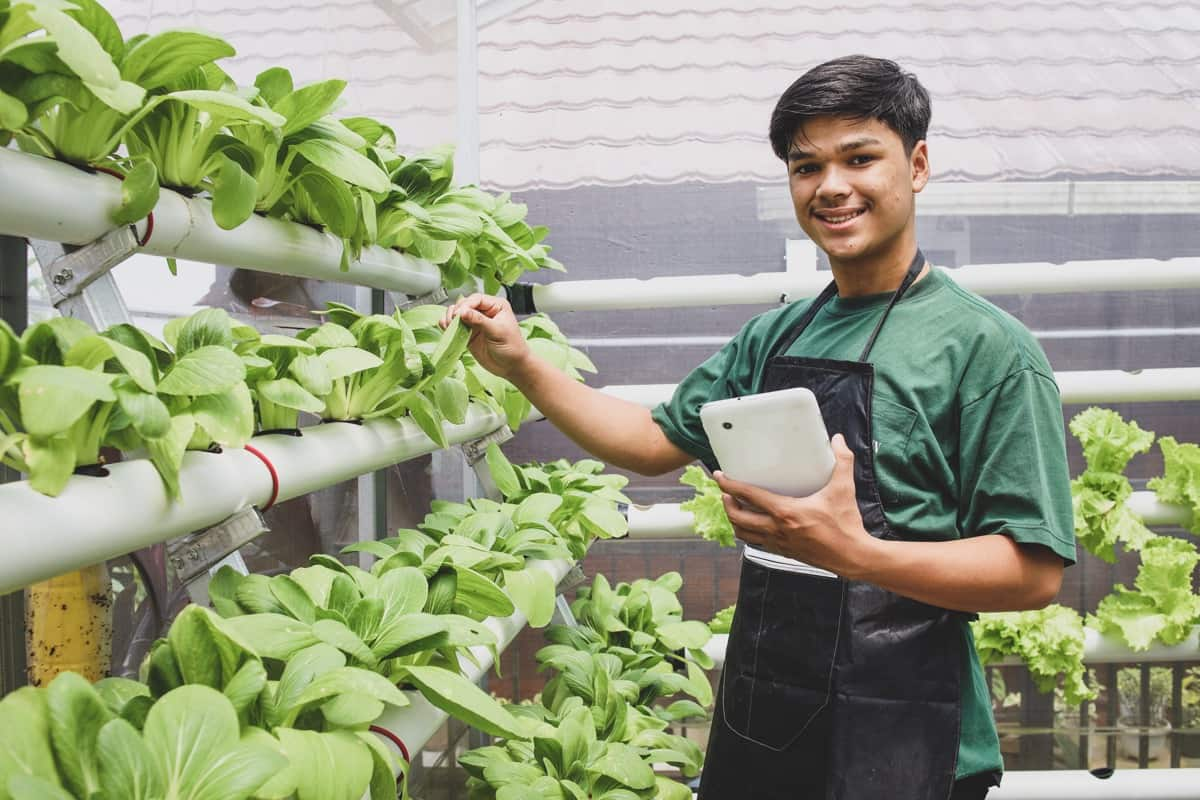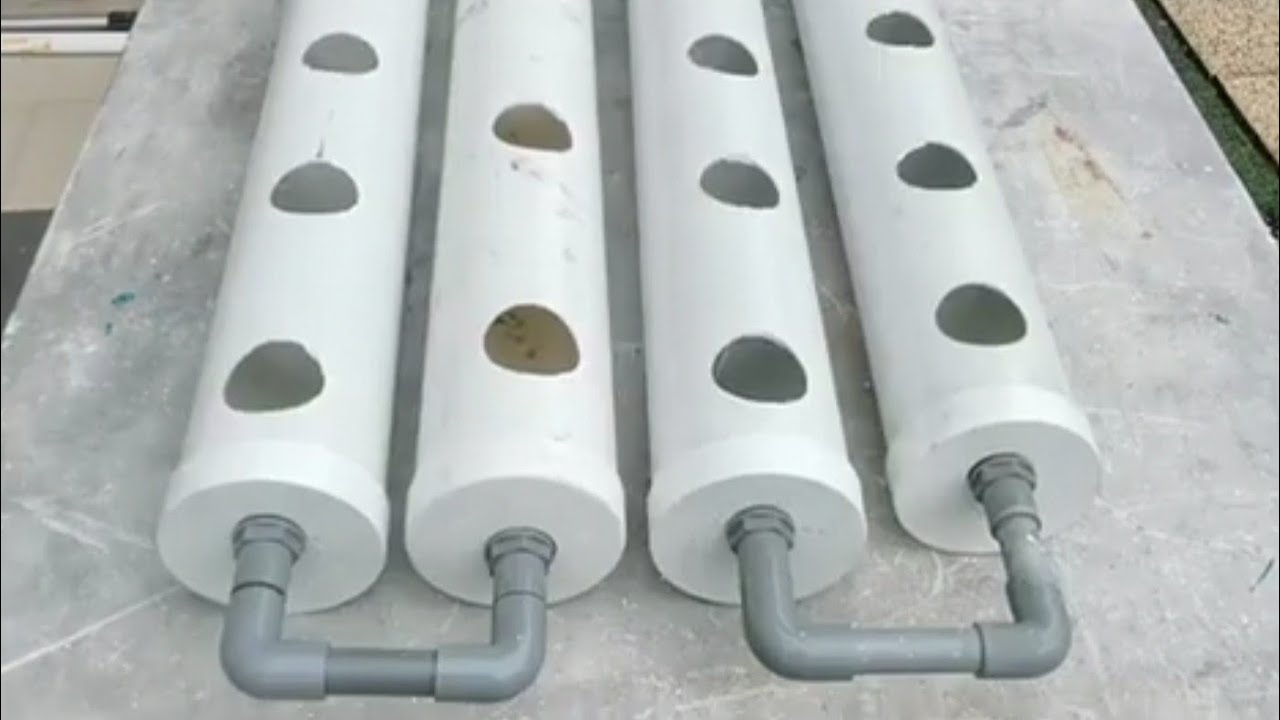To build a hydroponic garden with PVC pipe, gather the necessary materials and follow step-by-step instructions. Hydroponic gardening offers a unique and efficient way to grow plants without soil, using water and nutrient solutions instead.
One popular method involves building a hydroponic garden with PVC pipe, which is affordable, readily available, and easy to work with. Whether you have limited space or simply want to explore a new gardening technique, a hydroponic garden can be a rewarding project.
By utilizing PVC pipes, you can create a vertical garden system that maximizes space and allows for the cultivation of various plants. We will guide you through the process of building a hydroponic garden with PVC pipe, providing you with the necessary knowledge and helpful tips to get started.

Credit: hydroplanner.com
Choosing The Right Pvc Pipe
In order to build a successful hydroponic garden using PVC pipes, one of the most crucial decisions you’ll have to make is choosing the right PVC pipe for your project. The type of PVC pipe you select, its size, and length will all have an impact on the efficiency and effectiveness of your hydroponic system. Let’s explore the different aspects you should consider when choosing your PVC pipe.
Pvc Pipe Types
When it comes to PVC pipe, there are typically three main types to choose from: Schedule 40, Schedule 80, and furniture-grade PVC. Each type has its own strengths and considerations.
Schedule 40 PVC Pipe:
- Most commonly used type of PVC pipe for hydroponic gardens
- Available in various diameters and lengths
- Durable, lightweight, and easy to work with
- Cost-effective option for small to medium-sized hydroponic setups
- Made for non-pressurized applications, such as drainage and irrigation
Schedule 80 PVC Pipe:
- Heavy-duty and stronger than Schedule 40 PVC pipe
- Thicker walls make it more resistant to high pressure
- Suitable for large-scale hydroponic systems with higher water pressures
- Higher cost compared to Schedule 40 PVC pipe
- Not necessary for most typical hobbyist hydroponic setups
Furniture-grade PVC Pipe:
- Premium quality PVC pipe that is aesthetically pleasing
- Designed for outdoor furniture, crafts, and decorative projects
- Does not have the same structural strength as Schedule 40 or Schedule 80 PVC pipe
- More expensive option and not recommended for hydroponic systems
Pipe Size And Length
Once you’ve decided on the type of PVC pipe that suits your needs, you’ll need to consider the pipe size and length for your hydroponic garden.
The pipe size, commonly measured in inches, refers to the inside diameter (ID) of the pipe. The most commonly used pipe size for hydroponic systems is 1/2 inch or 3/4 inch. These sizes provide adequate water flow and are widely available.
When it comes to determining the pipe’s length, consider the dimensions of your garden space and the layout of your system. Ensure your PVC pipe is long enough to reach all the necessary components of your hydroponic setup.
Gathering The Necessary Tools And Materials
To build a hydroponic garden with PVC pipe, you need to gather the necessary tools and materials. This includes PVC pipes, pipe connectors, a water pump, grow trays, and a nutrient solution. Ensure all the items are readily available before starting the project.
Gathering the Necessary Tools and Materials As you begin your journey to create a hydroponic garden using PVC pipes, it’s essential to gather all the tools and materials needed for the project. Having the right equipment and supplies will ensure a smooth and efficient construction process, allowing you to enjoy the benefits of your hydroponic garden sooner. Required Tools First, let’s look at the essential tools you’ll need for this project. These tools will help you cut and assemble the PVC pipes, as well as make adjustments as needed. 1. PVC pipe cutter 2. Measuring tape 3. Drill and drill bits 4. Screwdriver 5. Adjustable wrench Materials List Next, let’s explore the materials required for building your hydroponic garden with PVC pipe. | Item | Quantity | |———————-|————| | PVC pipes | | | PVC pipe fittings | | | PVC glue | | | Net pots | | | Growing medium | | | Nutrient solution | | | Submersible pump | | | Tubing | | | Water reservoir | | | pH and TDS meters | | This list varies depending on the size and scope of your hydroponic garden project. Ensure that you have the necessary quantities based on the dimensions of your garden design. By having the required tools and materials prepared beforehand, you’ll be ready to move on to the next steps of the hydroponic garden construction process with ease.Designing Your Hydroponic Garden
When it comes to building a hydroponic garden, designing the layout is an important step to ensure optimal plant growth. By carefully planning and considering the size and layout of your garden, you can create a thriving hydroponic system that maximizes space utilization and enhances plant health. In this section, we will explore the key elements of designing your hydroponic garden.
Determining The Garden Size
If you are new to hydroponics, it is advisable to start with a smaller garden size. This allows you to gain experience and learn the basics of hydroponic gardening without overwhelming yourself. Consider the available space in your home or backyard and think about how many plants you want to grow. Remember, in hydroponics, plants can be grown closer together compared to traditional soil-based gardening.
The size of your garden will also depend on the type of plants you wish to grow. Leafy greens like lettuce and herbs require less space compared to larger plants like tomatoes or cucumbers. Additionally, take into account the availability of resources such as water and nutrients, as larger gardens will require more inputs.
Planning The Layout
Once you have determined the size of your garden, the next step is to plan the layout. Creating a well-organized system ensures efficient usage of space and easy access for maintenance. Consider the following factors while planning the layout of your hydroponic garden:
- Available light: Place your garden in an area that receives sufficient natural light or invest in artificial grow lights to provide the necessary light spectrum.
- Accessibility: Leave enough space for easy movement and maintenance. You should be able to access individual plants without disturbing others.
- Support structure: If growing vining plants or larger crops, consider adding vertical support using trellises or stakes to prevent plants from overcrowding and to ensure proper air circulation.
- Water and nutrient delivery: Plan your system to efficiently deliver water and nutrients to each plant. Consider the use of PVC pipes to create a network that evenly distributes water and nutrients throughout the garden.
By carefully planning the layout of your hydroponic garden, you can ensure a favorable environment for plant growth and easy management.

Credit: www.agrifarming.in
Building The Pvc Pipe Framework
Discover how to construct a PVC pipe framework for your hydroponic garden with this comprehensive guide. Learn step-by-step instructions on assembling the framework, providing a solid foundation for your plants to flourish.
Building a hydroponic garden with PVC pipes is a cost-effective and space-efficient way to grow your own plants. One of the key steps in this process is constructing the PVC pipe framework that will hold your plants and deliver water and nutrients. In this section, we will guide you through two essential steps: cutting and assembling the pipes and securing the joints.Cutting And Assembling The Pipes
Firstly, gather all the necessary materials, including PVC pipes, a measuring tape, and a saw. Start by measuring the desired height for your hydroponic system and mark it on the PVC pipes. Next, use the saw to cut the pipes according to the measurements. Remember to cut straight and smooth edges to ensure a snug fit and prevent leakage. Once all the pipes are cut, it’s time to assemble them. Begin by connecting the vertical pipes to the horizontal pipes. Apply a thin layer of PVC primer to the ends of the pipes, followed by PVC cement. Press the pipes firmly together, making sure they are aligned correctly. Hold them in place for a few seconds to allow the cement to bond. Repeat this process for all the joints until you have the desired framework for your hydroponic garden.Securing The Joints
To ensure the stability and durability of your PVC pipe framework, it’s important to secure the joints properly. One effective method is to use PVC pipe fittings. These fittings come in various shapes, such as T-joints and elbow joints, and are designed to connect and stabilize the different sections of the framework. To secure the joints, insert the PVC pipe fittings into the appropriate ends of the pipes. Push them in firmly until they fit snugly. This will ensure a tight and secure connection, minimizing the risk of the pipes coming apart. Additionally, you can use PVC adhesive or PVC tape to further reinforce the joints, providing extra strength and stability to your hydroponic garden. Building the PVC pipe framework for your hydroponic garden requires precision and attention to detail. By accurately measuring, cutting, and assembling the pipes, as well as securing the joints effectively, you can create a sturdy and reliable structure to support your plants. In the next section, we will delve into the essential components for setting up a hydroponic system using PVC pipes.Setting Up The Hydroponic System
Building a hydroponic garden with PVC pipes is an innovative and efficient way to grow plants without soil. One of the key steps in this process is setting up the hydroponic system, which involves installing the growing tubes and attaching the drip system. These components play a crucial role in delivering the necessary nutrients and water to the plants, ensuring optimal growth and development.
Installing The Growing Tubes
To begin the setup, start by installing the growing tubes. Cut the PVC pipes into equal lengths, ensuring they are long enough to accommodate the plants’ root systems. Create holes along the length of the pipes to accommodate the net pots, which will hold the plants in place. Once the holes are in place, secure the net pots in position, making sure they are stable and level. Additionally, ensure that the pipes are properly supported by a sturdy frame to prevent any instability.
Attaching The Drip System
The next step involves attaching the drip system to deliver water and nutrients to the plants. Secure the water pump to the reservoir and connect the tubing to the pump outlet. Place the other end of the tubing inside the growing tubes, allowing the nutrient solution to drip into each plant’s container. Adjust the flow rate to ensure that each plant receives an adequate amount of the nutrient solution. This system provides a constant and controlled supply of water and nutrients, promoting healthy plant growth and development.

Credit: www.pvcfittingsonline.com
Conclusion
Incorporating a hydroponic garden using PVC pipes is a sustainable and cost-effective way to grow plants. By following the step-by-step guide, you can create a thriving garden using minimal space and resources. Embracing this innovative method empowers individuals to cultivate fresh produce without soil, contributing to a greener environment and healthier lifestyle.








